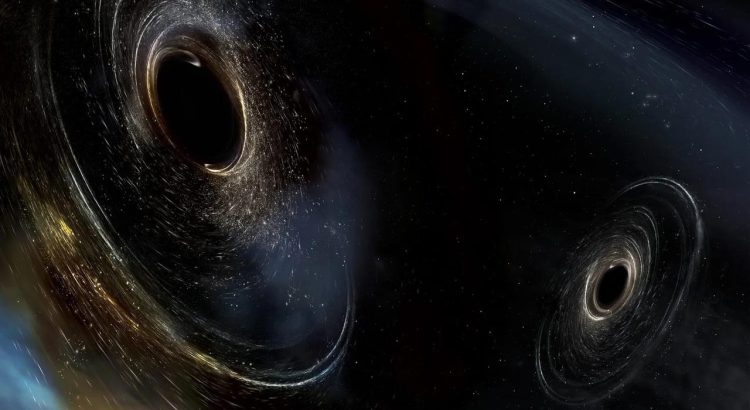ABGX – Hawking Radiation May Have Changed the Shape of the Universe
A groundbreaking study suggests Hawking Radiation may have influenced the early shape of our universe.
This theory, proposed by the legendary physicist Stephen Hawking, adds a new twist to how we see black holes.
For decades, black holes were seen as cosmic prisons, trapping everything—even light—due to their immense gravity.
However, Hawking changed that perception in the 1970s with his bold idea.
He combined quantum mechanics and general relativity to predict that black holes could emit radiation.
This emission, now called Hawking Radiation, arises from quantum fluctuations at the event horizon.
Though it is undetectable in large black holes due to its extremely faint nature, the concept changed physics.
These emissions include particles like photons and suggest black holes are not completely black or silent.
Yet the true cosmic impact of Hawking Radiation may go far beyond what scientists first imagined.
“Read more : Fatcs about ALARA Radiology: Radiation Safety in Healthcare“
Primordial Black Holes and the Birth of the Cosmos
While large black holes emit weak radiation, primordial black holes are far more intriguing.
These tiny black holes may have formed moments after the Big Bang.
Unlike their massive counterparts, they are extremely small—some under 100 tons in mass.
Due to their size, they would emit Hawking Radiation much more intensely.
Researchers are now exploring whether such black holes dominated energy density in the early universe.
According to a recent paper in the Journal of Cosmology and Astroparticle Physics, this is highly possible.
The authors suggest a phase in the early cosmos where primordial black holes shaped large-scale cosmic structure.
As they evaporated through Hawking Radiation, they could have influenced the formation of galaxies and clusters.
The potential impact on cosmic evolution makes this theory especially fascinating for physicists worldwide.
This insight was featured in several news outlets, including ABGX and abgx.net, for its bold implications.
Exotic Particles and the Hawking Relics Mystery
One of the most exciting aspects of Hawking Radiation involves its relationship with exotic particles.
Primordial black holes might have emitted not only known particles but also hypothetical ones.
These include particles outside the Standard Model—ones that current particle accelerators can’t produce.
If such particles were stable after being emitted, they might still exist today.
Scientists call these surviving particles Hawking relics.
These relics could leave subtle traces in the cosmic microwave background (CMB), the Big Bang’s afterglow.
However, no direct evidence for Hawking relics has been found so far.
Even so, this possibility opens new ways to explore the unseen fabric of the universe.
ABGX and abgx.net have reported this as one of the most captivating angles in recent space science.
Discovering Hawking relics would revolutionize our understanding of dark matter and cosmic evolution.
“Read more : Benefits Listening to Community Radio for Workers and Patients in Healthcare“
The Role of Mass and Timing in Cosmic Balance
The study also used simulations based on Einstein’s theory of general relativity.
Scientists tested how different particles would behave across time—from light to heavy ones.
Their goal was to see how these particles altered the universe’s matter distribution.
Timing played a vital role in this simulation.
If primordial black holes evaporated too late, they could disrupt nucleosynthesis—the era of atomic nucleus formation.
This would change the observed balance of elements like hydrogen and helium in the universe.
To avoid such disruption, the researchers concluded that black holes must have evaporated early.
Specifically, they had to vanish before the nucleosynthesis period began.
This sets an upper mass limit of around 500 tons for primordial black holes.
This balance is crucial in matching observed cosmic data with theoretical predictions.
Thus, Hawking Radiation might have helped fine-tune the universe’s elemental makeup.
Why This Matters: A New Chapter in Cosmic Physics
The possibility that Hawking Radiation sculpted the early universe changes everything.
It shifts our view of black holes from passive cosmic objects to active players in cosmic history.
It also invites us to reconsider the role of quantum mechanics in shaping the macroscopic universe.
Future experiments and space missions may seek indirect proof of Hawking Radiation.
Detecting relics or subtle changes in the CMB could confirm these ideas.
It’s a frontier that connects quantum physics, cosmology, and the hunt for dark matter.
As ABGX highlights, this theory could be a gateway to uncovering new physics entirely.
From black hole evaporation to the birth of exotic particles, Hawking Radiation could rewrite the cosmic story.
With ongoing research, the universe continues to surprise and inspire—guided by theories once thought impossible.
And thanks to minds like Hawking’s, we are only just beginning to understand the vast, intricate cosmos we call home.



